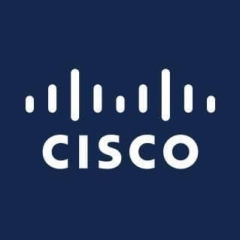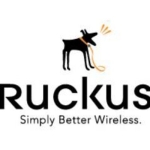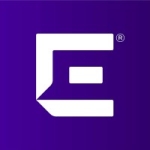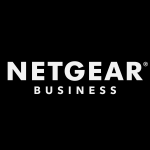
Configuration is simple and enhances career development with technical support
Pros and Cons
- "Cisco Wireless is easy to configure."
- "The interface and integrations should be more intuitive. Sometimes, integration with other Cisco products requires manual intervention for tasks such as firmware upgrades, which should be automated."
What is our primary use case?
I work with Cisco Wireless by supporting the users and configuring the network solutions.
What is most valuable?
Cisco Wireless is easy to configure. My career began with this product and I have been familiar with it for almost nine years. The configuration is straightforward and valuable for the network's performance.
What needs improvement?
The interface and integrations should be more intuitive. Sometimes, integration with other Cisco products requires manual intervention for tasks such as firmware upgrades, which should be automated.
For how long have I used the solution?
I have been familiar with Cisco Wireless for almost nine years.
Buyer's Guide
Cisco Wireless
January 2026
Learn what your peers think about Cisco Wireless. Get advice and tips from experienced pros sharing their opinions. Updated: January 2026.
879,711 professionals have used our research since 2012.
What do I think about the stability of the solution?
I have not faced any challenges with the stability of Cisco Wireless.
How are customer service and support?
The technical support from Cisco is good.
How would you rate customer service and support?
Positive
What's my experience with pricing, setup cost, and licensing?
The licensing of Cisco Wireless is competitive.
What other advice do I have?
I rate Cisco Wireless nine out of ten overall.
Disclosure: My company does not have a business relationship with this vendor other than being a customer.
Infrastructure Engineer at a government with 1,001-5,000 employees
Provides good coverage but needs to improve the security part
Pros and Cons
- "It is a very scalable solution."
- "Even though the tool offers a cloud-based central management option, the product needs to work on improving the security part a bit since it is an area of concern."
What is most valuable?
The most valuable feature of the solution is the coverage it provides. My company bought six to eight pieces of the tool, considering the coverage it offers.
With Cisco Wireless, users need the solution to offer good coverage and receive good support from Cisco Meraki.
What needs improvement?
Even though the tool offers a cloud-based central management option, the product needs to work on improving the security part a bit since it is an area of concern.
For how long have I used the solution?
I have been using Cisco Wireless since April 2023. My company is a customer of the tool.
What do I think about the stability of the solution?
Stability-wise, I rate the solution a seven out of ten.
There are some instances where the connectors in the tool don't allow users to browse the internet.
What do I think about the scalability of the solution?
It is a very scalable solution. Scalability-wise, I rate the solution a nine out of ten.
Around 2000 people in my company use the product.
How are customer service and support?
The support offered for the solution is good. I rate the support a seven out of ten. Sometimes, users have to talk to support to get updates.
How would you rate customer service and support?
Neutral
How was the initial setup?
To handle the setup phase of the tool, one just needs to be tech-savvy. The setup and implementation are easy for anyone who has dealt with such processes in the past for any business.
I rate the product's initial setup phase an eight on a one to ten scales, where one is difficult, and ten is easy.
If I consider the access points, the solution is deployed on-premises.
The solution deployment phase doesn't even take an hour.
What's my experience with pricing, setup cost, and licensing?
I rate the product price an eight on a scale of one to ten, where one is low price and ten is high price.
What other advice do I have?
The tool is available on the cloud to manage and optimize our company's network performance. Through a cloud-based, the tool allows you to access your access points. You can choose to change or optimize your network from a central location to all the sites that your organization has, which is a good feature for me.
I have integrated Cisco Wireless with other network management tools, like Cisco DNA Center, in my previous job but not at my current workplace.
The integration capabilities of the product are good. I would rate the tool's integration capabilities an eight out of ten.
I recommend the product to those who plan to use it.
I rate the tool a seven and a half out of ten.
Which deployment model are you using for this solution?
On-premises
Disclosure: My company does not have a business relationship with this vendor other than being a customer.
Buyer's Guide
Cisco Wireless
January 2026
Learn what your peers think about Cisco Wireless. Get advice and tips from experienced pros sharing their opinions. Updated: January 2026.
879,711 professionals have used our research since 2012.
Security Administrator at a insurance company with 1,001-5,000 employees
A robust and easy-to-manage solution that is compatible with a lot of mobile devices
Pros and Cons
- "The product is compatible with a lot of mobile devices."
- "The security must be improved."
What is our primary use case?
We use the solution for switching and routing. We also have access to resources around the local area network.
What is most valuable?
The product is compatible with a lot of mobile devices. It is easy to manage and administer.
What needs improvement?
The security must be improved. The vulnerabilities are easily exploitable. Security features must be added.
For how long have I used the solution?
I have been using the solution for 13 years.
What do I think about the stability of the solution?
The tool is very stable. I rate the stability a nine out of ten.
What do I think about the scalability of the solution?
The tool is easy to scale. I rate the scalability an eight out of ten. We have 2000 users in a single location. A user can have four to five devices.
Which solution did I use previously and why did I switch?
We were using another solution, but it was incompatible with the Identity Services Engine we deployed. So, we switched to Cisco Wireless.
How was the initial setup?
I rate the ease of setup a seven out of ten. The time taken for deployment depends on the number of access points we want to connect. It takes a week to deploy the tool for 1500 to 2000 devices.
What's my experience with pricing, setup cost, and licensing?
The product is expensive. I rate the pricing a ten out of ten. We are dependent on the dollar. There is a global economic issue.
What other advice do I have?
I recommend people use the solution even if it means that they have to start small. Initially, the investment can be expensive, but the product is robust and enduring. We can use it for a very long time. Overall, I rate the product an eight out of ten.
Which deployment model are you using for this solution?
On-premises
Disclosure: My company does not have a business relationship with this vendor other than being a customer.
Head of business at a construction company with 1-10 employees
Maintains a comprehensive product range across all levels and excels in comparison to other networking sites
Pros and Cons
- "Cisco is one of the leading brands, particularly in the commercial sector. Other brands such as Extreme, cater to different categories at lower levels. Cisco maintains a comprehensive product range across all levels and excels in comparison to other networking sites. They also boast a team of highly qualified professionals, a feature that sets them apart from competitors like Netgear, which lacks such expertise."
What is our primary use case?
We used Cisco wireless for medical centers, including remote locations where the regional GMO and RMO are situated. They required real-time connectivity to maintain in-patient reports.
What is most valuable?
Cisco is one of the leading brands, particularly in the commercial sector. Other brands such as Extreme, cater to different categories at lower levels. Cisco maintains a comprehensive product range across all levels and excels in comparison to other networking sites. They also boast a team of highly qualified professionals, a feature that sets them apart from competitors like Netgear, which lacks such expertise.
What do I think about the stability of the solution?
The solution is stable.
What do I think about the scalability of the solution?
The solution is scalable but they have a limitation to each and every product based on the price points. If you go beyond that, there is a proxy error.
Five people are using this solution.
How are customer service and support?
We have good support from Cisco Wireless. We've never encountered any technical issues when going through them because once we follow the deployment plan and its steps, any repairs or detections are usually straightforward. If we deviate from the plan, we might encounter difficulties, as we lack the necessary tools.
How was the initial setup?
The initial setup is straightforward unless it's a manageable task; otherwise, we must configure their own parameters.
For deployment, there are manuals available with instructions for both manual setup and automated setup. Based on these instructions, the technician will proceed to configure the Cisco wireless system using the provided panels.
What was our ROI?
Most devices are connected wirelessly. Previously, there were few security features, but now security measures are robust. They offer protection, so people trust the technology and use it.
What's my experience with pricing, setup cost, and licensing?
The product is expensive.
What other advice do I have?
They have to have a permanent license. Without a license, we can't access the cloud. There is cloud management available, but it comes with a cost.
These devices are not very complicated. They have a standard but extensive functionality that is really helpful. The standard feature is reliable data connectivity followed by bandwidth. However, the devices are almost the same because they meet the user requirements.
Mostly, government or any corporate clients will prefer a standard product in their infrastructure.
I recommend the solution depending on their budget. If they are willing to opt for a brand with prestige and reliability, then they can choose Cisco. Additionally, for a budget-friendly option, Alibaba is also available. So, if they aim to keep costs within certain limits, they can consider these options. However, government institutions may face constraints due to their funding limitations. In such environments, they may not prioritize premium solutions. Let's delve deeper into this. They might include that particular brand in a closed-end project. However, companies typically prioritize their annual costs and overall expenses.
Overall, I rate the solution a nine to ten out of ten.
Disclosure: My company has a business relationship with this vendor other than being a customer. Integrator
Division Head Enterprise Infrastructure (SVP) at a financial services firm with 10,001+ employees
Integrates with ISE, and is secure, reliable, and easy to deploy
Pros and Cons
- "Wireless connectivity is the main feature. It is also securely integrated with ISE, which is valuable because, in the banking industry, we also cover the security aspect. This Wi-Fi controller integrates with the ISE system that we have. Every user that comes on the wireless needs to log in with the domain. If they don't, it will not allow the user to join the network. This is the key feature of this solution."
- "The main concern is the length and overlapping. We have to put on four to six access points on the same floor, and we face the issue of overlapping areas. If Cisco can extend the range of their indoor APs, we would need to install just one or two access points, and it would eliminate the problem of the overlapping area."
What is our primary use case?
We have two types of controllers in our network. One is a Cisco Wireless Controller, which is software-based, and the second one is an SD-WAN Controller, which is hardware-based.
We have installed this controller in the two buildings. One is in Lahore, and one is in Karachi. In one of them, there are around 54 wireless LANs and 54 wireless routers for 200 to 300 customers, and the other one is also serving 250 to 300 customers.
We are using its latest version. It is deployed on-premises because as per the regulations, we cannot put not any controller on the cloud for the banking infrastructure. That's why we install the controller on the site.
We have installed it for secure connectivity while roaming within the building. We have four VLANs. One is the wireless one for the most senior executives. We have a grading system in the bank. The senior vice president, the executive vice president, and the president are in one group. The second VLAN or Wi-Fi is for the assistant vice president and the vice president. The third one is for all users from OG-3 officers to OG-1. The fourth one is for any guests who walk into our building, such as vendors or workers who come into the office building.
What is most valuable?
Wireless connectivity is the main feature. It is also securely integrated with ISE, which is valuable because, in the banking industry, we also cover the security aspect. This Wi-Fi controller integrates with the ISE system that we have. Every user that comes on the wireless needs to log in with the domain. If they don't, it will not allow the user to join the network. This is the key feature of this solution. If we install any other wireless, they give us MAC address binding. They also give us hardware address connectivity, but Cisco Wireless supports integration with ISE, and the ISE part is an option for the application posture. When we implement the application posture on the upper file system, if anyone connects to the network wirelessly or wired, they can only access specific applications. For example, if I give them permission only for Word and Excel, they would just be able to open Word and Excel on their laptops. If I give them access to the email system, they will just be able to open their email. This is the main benefit of the integration with Cisco ISE.
What needs improvement?
The main concern is the length and overlapping. We have to put on four to six access points on the same floor, and we face the issue of overlapping areas. If Cisco can extend the range of their indoor APs, we would need to install just one or two access points, and it would eliminate the problem of the overlapping area.
They should provide built-in features for safe authentication. Right now, we integrate with ISE and FortiClient for this feature. We first check the NAC, and after the NAC and before the domain, a token password installed on their mobile or a physical token is required to join the network. If Cisco had built-in authentication, we would be able to eliminate one product from our network.
For how long have I used the solution?
We have been using this controller since 2012.
What do I think about the stability of the solution?
It is stable and reliable. In the last seven to eight years, we had zero downtime in our production environment. That's also because we have it in cluster mode. So, if one controller fails, the second one will automatically take over.
What do I think about the scalability of the solution?
It is very easy to scale. The controller license that we currently have can handle 500 APs, but we have only 50 to 60 APs. We can just add APs and go on. We should put only 80% load on a device, so when we reach 400 APs, we need to add a controller.
How are customer service and support?
We have the Cisco Wireless Controller agreement. If we face any issue, we engage our first-level support. If the issue is non-critical, such as at a branch level, we engage the second level of support. If the issue is at the core level, then we directly engage the third-level support to resolve the issue. If the issue is still not resolved, we open the case through the Cisco website, and a Cisco engineer is available. Cisco also has three levels: one, two, and three. If you have a severity level three, Cisco engages someone within 15 to 20 minutes. If the severity level is one, Cisco engages someone after two, three, or four hours. They engage as per the case severity. I am satisfied with their support.
How was the initial setup?
It is straightforward. With some clicks, you can add and delete everything. It is very simple. If you have the knowledge, everything is simple. If you're untrained, you need some time to understand things.
In terms of duration, in a 10-floor building in Lahore, for a room, the cabling work and firewall configuration take three to four days. Some of the configurations can take four to five days.
What about the implementation team?
We have a team of people certified in Cisco and Huawei, and we directly engage with Cisco. We eliminate other vendors, which has two benefits. One benefit is the knowledge from Cisco, and the second benefit is that it eliminates the cost of the support. When any vendor comes to your site and offers services, they charge 10% to 20% of the SLA cost.
Cisco gave us a contract team, and we directly engaged with Cisco for installation and integration. We have support at levels one, two, and three. At level four, when there is a hardware failure, we go to Cisco and open an RMA. Cisco then sends us a new product that we install personally. We don't need any vendor support.
Their maintenance is done quarterly. The hardware support team uninstalls our APs on off days, cleans them up, loads the required things, and then reinstalls them. If they find any defect in the physical box, they just open an RMA. Cisco then gives us a new product, and we install the product.
There are two people who work on the controller and access points. Customer enrollment is handled by the desktop support team, which is a 30 people team. Out of them, 10 to 15 people take care of user access. The core team has only two network guys.
The other part is the hardware support team, and for the whole bank, there are 30 to 40 people for any kind of hardware support. Any person is available to replace the AP. It is just a few-minute job. They just plug out the cable, do the installation. When APs come on the network, they directly go to the controller, and the controller updates their software and pushes the configuration. It is an easy task.
What's my experience with pricing, setup cost, and licensing?
Its cost is a little bit higher than other products. Fortinet and Huawei are cheaper. If we were not a bank, I would go for Huawei or Fortinet because they are cheap, and I don't need that much security. A financial institute, a university, or a medical institute would need security to protect the customer data. That's why we buy this high-end product that has integrated security features.
What other advice do I have?
I would recommend it based on the requirements. Any medical, educational, financial, and government sector can go for Cisco with closed eyes. A retail shop, store, or restaurant doesn't require Cisco. They just need internet access, and they can go with Huawei, Fortinet, Ruckus, or any other third party. You need to know your requirements before deciding on a solution.
I would rate this solution an eight out of 10.
Which deployment model are you using for this solution?
On-premises
Disclosure: My company does not have a business relationship with this vendor other than being a customer.
Co-Director at a tech services company with 201-500 employees
Offers good flexibility, security, coverage, and stability
Pros and Cons
- "Cisco Wireless improves mobility and flexibility. The only case we are working on is with hospitals, focusing on the mobility of doctors within the hospital. Everywhere, doctors need to be connected to the network, even within the operating theater, patient rooms, and even the basement, like the radiology department. As far as the solution goes, the coverage is usually very comprehensive."
- "For pricing, Cisco has to make an effort, or Cisco has to improve the distribution channel."
What is our primary use case?
We have to set up the whole solution. The wireless network is a big part of the solution because of the mobility within the hospital. Doctors use their smartphones to access the system, so they need very stable and strong wireless connectivity.
The hospital layout means a doctor might be quite far from the room, and there could potentially be a significant signal problem. With Cisco, we don't have this problem.
How has it helped my organization?
Cisco Wireless improves mobility and flexibility. The only case we are working on is with hospitals, focusing on the mobility of doctors within the hospital.
Everywhere, doctors need to be connected to the network, even within the operating theater, patient rooms, and even the basement, like the radiology department. As far as the solution goes, the coverage is usually very comprehensive.
I would rate the impact of the implementation of Cisco Wireless on the overall IT infrastructure and user experience a seven out of ten, with ten being very positive impact.
What is most valuable?
It offers good security, coverage, and stability. I like these aspects.
What needs improvement?
For pricing, Cisco has to make an effort, or Cisco has to improve the distribution channel.
It means when I send an email or when I have a complaint, for example, there is a Cisco distributor, and it's in competition with others.
I have to escalate this case to Cisco, and it will help us to improve our business with Cisco and prevent us from going to other solutions like Aruba or now Fortinet. We have some good switches and access point controllers now.
So, sometimes, when we find some problems with Cisco's distribution channel, we switch our customers to other brands.
What do I think about the stability of the solution?
I would rate the stability a nine out of ten. Within our customers, the hospital infrastructure is established from the first day, and it's still stable.
What do I think about the scalability of the solution?
The hospital was 100 beds and still is, for ten years. So, we didn't really experience the scalability of this kind of solution.
So, I don't have experience with the scalability of the solution. We usually have medium-sized businesses. We work ith hospitals that have 100 to 200 beds. This is our market. We have the same kind of clients.
How was the initial setup?
The initial setup was difficult the first time, but now it's easy for us.
We have to test the coverage area; the configuration will take us one day. But to test the coverage area, it will take maybe ten days to two weeks.
What about the implementation team?
We set up the whole network, including the privileged network, wireless network, and security with firewalling.
What's my experience with pricing, setup cost, and licensing?
It is an expensive product. I would rate the pricing a nine out of ten, with ten being expensive.
What other advice do I have?
Overall, I would rate the solution a nine out of ten.
I would recommend using it because of my good experience with it. They are stable and secure. All good experiences.
Which deployment model are you using for this solution?
On-premises
Disclosure: My company has a business relationship with this vendor other than being a customer. Reseller
CEO at a tech services company with 1-10 employees
Significantly improved our reliability and coverage
Pros and Cons
- "The most valuable features for network security with Cisco Wireless were the policy enforcement capabilities."
- "It's expensive."
What is our primary use case?
When we transitioned to using Cisco Wireless for our network access, it significantly improved our reliability and coverage. Previously, we had sporadic access points and inconsistent configurations, leading to security issues and disruptions. We implemented a policy-based infrastructure, securing our Wi-Fi network and ensuring connectivity to our ERP and email systems.
What is most valuable?
The most valuable features for network security with Cisco Wireless were the policy enforcement capabilities. Once the approved policy was implemented, it ensured secure access and control over the network, which was crucial for maintaining security standards.
What needs improvement?
The deployment of Cisco Wireless is centralized, offering native security features at the access points. Regarding price, it might be considered expensive, but if the features and ease of use are proven effective, it's worth it.
For how long have I used the solution?
I have been using Cisco Wireless since the least 10 years.
What do I think about the stability of the solution?
The stability of Cisco Wireless was excellent, with no complaints about downtime.
What do I think about the scalability of the solution?
Regarding scalability, our organization, being a public sector entity, didn't face scalability issues as we were already optimized. There were no plans for expansion or increasing device numbers.
How are customer service and support?
We never had to contact tech support for Cisco Wireless as we didn't encounter any issues requiring assistance. Maintenance services weren't utilized, so I can't comment on their impact.
How was the initial setup?
Deploying Cisco Wireless was straightforward for us as it was managed by the IT department. We didn't encounter any major issues during deployment. The process involved assessing placement for access points across the campus to ensure seamless coverage. Deployment could be done on-premises if needed.
What other advice do I have?
One piece of advice I'd give is to understand the deployment process thoroughly before starting. It's important to have a solid infrastructure design in place before implementing Cisco Wireless. Regarding cost, while it may seem expensive initially, if the features align with your needs, it's worth considering.
Disclosure: My company does not have a business relationship with this vendor other than being a customer.
Lead Network Engineer at a energy/utilities company with 5,001-10,000 employees
Useful for enterprise deployments but pricing is expensive
Pros and Cons
- "Before COVID, the emphasis was primarily on wireless connectivity in specific areas like conference rooms. However, with the shift to remote work and increased mobility, coverage areas needed to be expanded to accommodate users throughout the entire location. We are beginning to expand our infrastructure."
- "Cisco Wireless needs to improve pricing. I understand that Cisco products are typically more expensive than other vendors. Therefore, I believe that adjusting the pricing could potentially be beneficial. Discounts may be available depending on the customer or type of purchase, which could help offset the higher costs."
What needs improvement?
Cisco Wireless needs to improve pricing. I understand that Cisco products are typically more expensive than other vendors. Therefore, I believe that adjusting the pricing could potentially be beneficial. Discounts may be available depending on the customer or type of purchase, which could help offset the higher costs.
For how long have I used the solution?
I have been working with the product since 2008.
What do I think about the scalability of the solution?
Before COVID, the emphasis was primarily on wireless connectivity in specific areas like conference rooms. However, with the shift to remote work and increased mobility, coverage areas needed to be expanded to accommodate users throughout the entire location. We are beginning to expand our infrastructure.
How are customer service and support?
I wouldn't give support a ten out of ten since we may get bad engineers for support.
How would you rate customer service and support?
Positive
How was the initial setup?
I rate the tool's deployment an eight out of ten. The deployment time for a new project depends on various factors, such as the size of the network and the need for planning and gathering necessary information. The most time-consuming aspect is determining the placement of access points. However, configuring the wireless control is generally straightforward.
The maintenance required for Cisco Wireless depends on the specific deployment and deployment model. Generally, some level of maintenance will be necessary, such as keeping the software up to date.
What's my experience with pricing, setup cost, and licensing?
I rate the tool's pricing a ten out of ten. It is expensive compared to Aruba and Juniper.
What other advice do I have?
The scenario where Cisco Wireless significantly improved network performance isn't directly about performance but adaptability. With the shift to remote work during COVID, everyone became more mobile. Now, returning to the office, there's less reliance on fixed connections. People need to be adaptable. We need mobile devices like laptops and tablets, which rely on wireless connections to enable this. Transitioning from a wired setup to a wireless one allows for greater adaptability.
Currently, we only have wireless control for managing the wireless network. We're seeking a solution to handle wireless and wider network management. The product integrates easily with the existing infrastructure, like routers and switches.
I rate the overall product an eight out of ten. Whether to recommend Cisco Wireless to others depends on several factors. If they already have a Cisco deployment of devices, it's often easier to integrate and manage, making it a suitable choice. However, other products like Aruba might be more cost-effective. Cisco Wireless is particularly well-suited for enterprise deployments.
Disclosure: My company does not have a business relationship with this vendor other than being a customer.
Buyer's Guide
Download our free Cisco Wireless Report and get advice and tips from experienced pros
sharing their opinions.
Updated: January 2026
Product Categories
Wireless LANPopular Comparisons
Aruba Wireless
Ruckus Wireless
Juniper Mist Wireless Access Points
Cisco Meraki Wireless LAN
Huawei Wireless
Ubiquiti WLAN
Fortinet FortiAP
Omada Access Points
Mist AI and Cloud
Fortinet FortiWLM
Aruba Instant
D-Link Wireless
ExtremeWireless
Aruba Access Points
NETGEAR Insight Access Points
Buyer's Guide
Download our free Cisco Wireless Report and get advice and tips from experienced pros
sharing their opinions.
Quick Links
Learn More: Questions:
- Can Cisco Meraki and Cisco Wireless work in the same environment?
- Cisco Wireless Aironet 3802i vs. ALE OmniAccess Stellar AP1230. Which one is the best for the industry?
- Which wireless controller has maximum client connectivity and high throughput?
- What Is The Biggest Difference Between Aruba And Cisco Wireless?
- What is the biggest difference between Cisco Wireless and Ruckus Wireless?
- What are the biggest differences between Ruckus Wireless, Aruba Wireless, and Cisco Wireless?
- Which is better - Ruckus Wireless or Cisco Wireless?
- Which is better - Cisco Wireless or Cisco Meraki Wireless LAN?
- How does Cisco Wireless compare with Aruba Wireless?
- Does Cisco wireless access points support LDAP/AD authentication?



















